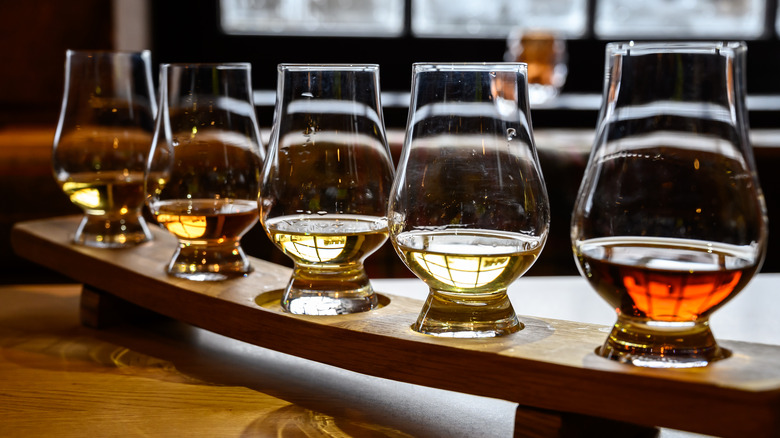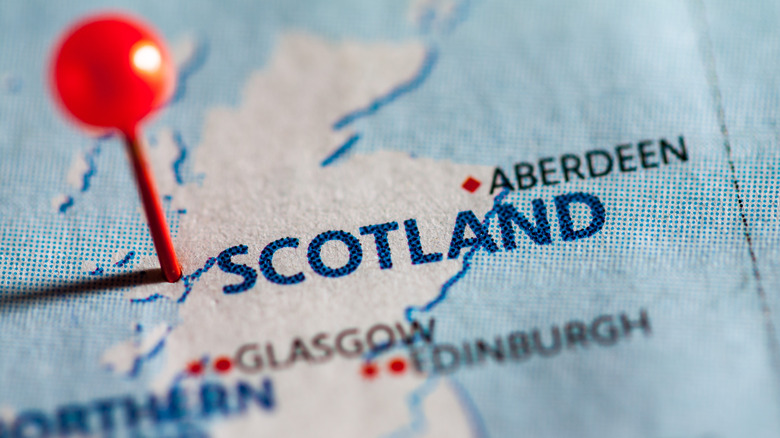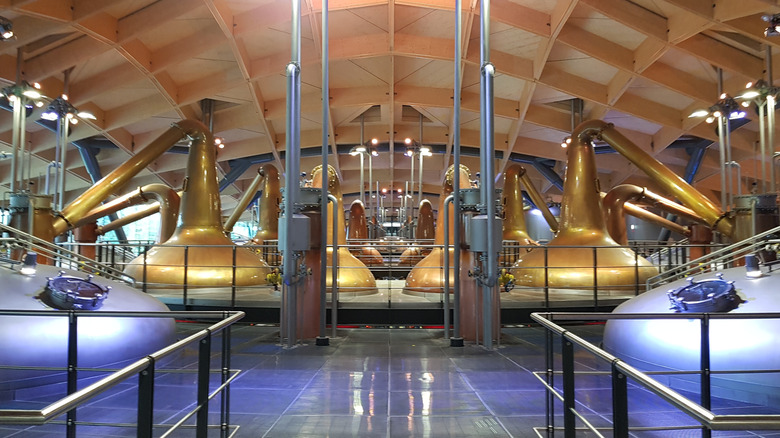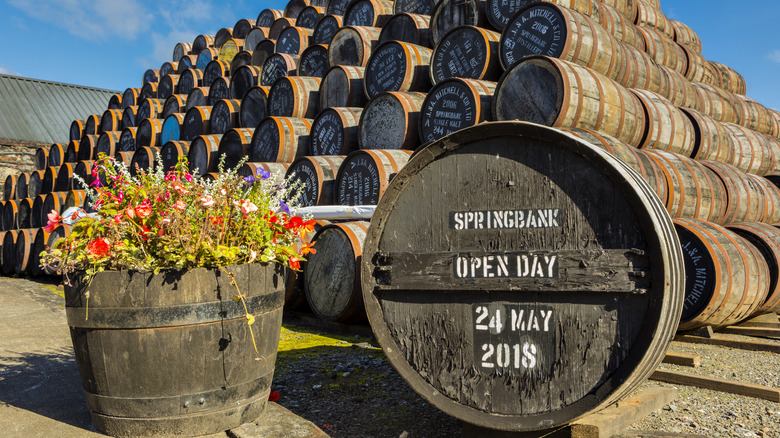These Are The Main Regions Of Scotland That Produce Scotch
Any discussion of Scotch whisky will bring up the topic of regional differences. For example, what's the difference between a Bruichladdich and a Benromach? Answer: Bruichladdich is made at a distillery on the island of Islay off the western coast of Scotland, and the whisky tends to be rich and smoky (though, as is typical for Scotch, there are exceptions). Benromach is a mainland Scotch made in an area called Speyside, and they produce whisky in a variety of styles, from earthy and smoky to spicy and fruity.
Understanding the regions of Scotch production is part history lesson, part geography lesson, part whisky-geekery, and can often involve heated disputes, best settled over a wee dram of the liquid gold that is Scotch whisky. Not only are there variations in style within each region, but these styles have also evolved over time. Whisky Advocate acknowledges that though the notion of regional styles can be useful in guiding your understanding and exploration of Scotch styles, the notion can also be misleading, meaning it's worth digging a bit deeper.
What are the regions for Scotch whisky?
Whisky Advocate explains that the first legal differentiation between whisky-producing regions in Scotland occurred in 1784 when different tax regulations were established for whisky produced in the Highland and Lowland regions. In 1905, the government of the UK issued a report that recognized five distinct regions of Scotch production, those detailed by the Scotch Whisky Association, namely Highland, Lowland, Speyside, Campbeltown, and Islay.
It was in 2009 that the UK created The Scotch Whisky Regulations, which Whisky Advocate explains regulates aspects of the whisky business like labeling and production, but does not dictate matters of regional style. These regulations establish three whisky regions: Highland, Lowland, and Speyside. They further recognize two whisky localities: Campbeltown and Islay. So technically, Malt Whisky Madness explains, there are only three Scotch regions and two localities. However, most whisky enthusiasts use "region" as a more generic term that applies to all five unique places of production. While understanding that there are differences between distilleries and whisky produced within each region, it's still useful to explore — at least in theory — what each Scotch region is known for in terms of whisky style and production.
Highland and Speyside whisky
The Highland region is the largest area of Scotch production, according to Liquor.com. Made in the north of Scotland, Highland scotches used to be described as "peaty," which means the malt for the whisky had been dried over peat-fueled fires, which imparts a distinctive, smoky note to the whisky. The kilns that dry malt in most of the Highlands are no longer fueled by peat, and Highland scotches are known for being elegant, fruity, and having the most variation within a region. The Highland region also includes whisky made on the islands off Scotland's coast (except for Islay). These islands include Jura, Skye, Orkney, Arran, and Mull (per Whisky Advocate). Notable Highland distilleries include Dalmore, Ardmore, Oban, and Glenmorangie.
The Speyside region is perhaps the most important Scotch region, according to Malt Whisky Madness, as it contains the most distilleries. The Scotch Whisky Association points out that many Speyside distilleries age their whisky in Sherry casks, which imparts notes of vanilla, honey, apple, pear, and spice. As if Scotch regions weren't confusing enough, Speyside is actually located within the Highland region, though it describes the area in the northeast, around the Spey river (per The Whisky Exchange). Speyside whisky isn't known for being particularly peaty, and distilleries of note include Macallan, Glenfiddich, Benromach, and Aberlour.
Lowland, Islay, and, Campbeltown whisky
Lowland Scotch is produced to the south of the Highlands. Lowland whisky is known for being the lightest, and while the region is noted for triple distilling its whisky, currently, Auchentoshan is the only producer distilling its spirits three times (per Malt Whisky Madness). The Lowland region is undergoing a revival, according to Whisky Mag, with several new distillers setting up shop in the area, though Scotch production is a slow process. Look for Auchentoshan and Glenkinchie to sample for now.
Islay is home to the peat monsters, Scotch whisky that's deep, brooding, and seriously smoky. Though there are distilleries on the little island that produce unpeated Scotch, that's not what the locality is known for (per Whisky Advocate). Islay producers worth tasting include Bruichladdich, Lagavulin, Ardbeg, and Laphroaig.
Campbeltown used to be called "the whisky capital of the world," though it's currently home to only three distilleries: Springbank, Glen Scotia, and Glengyle, according to Malt Whisky Madness. Stylistically, the spirits from Campbeltown are middle of the road, showing coastal salinity, smoke, and toffee notes (per the Scotch Whisky Association). Sampling the distinctive whisky produced in all the regions of Scotland may not be an inexpensive pastime, but it's certainly a journey worth taking.



